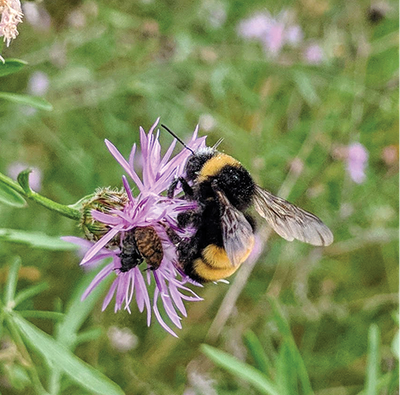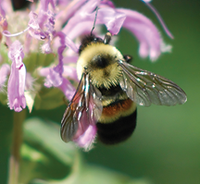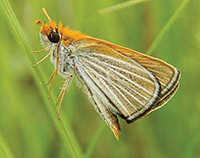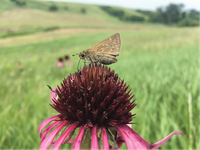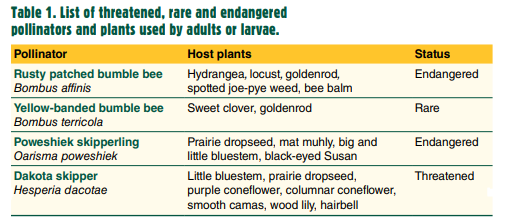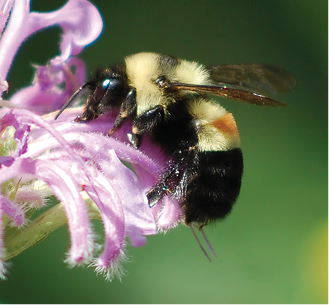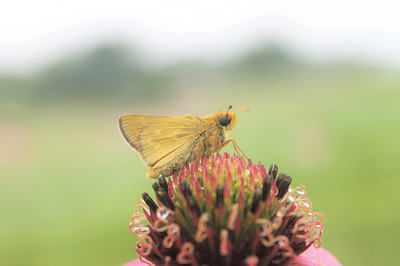Dakota skipper (Figure 4) occurs only where isolated sites of native tallgrass prairies occur in North Dakota, South Dakota, Minnesota and southern Manitoba and Saskatchewan, Canada. They have disappeared from their range in Illinois and Iowa.
About 15% of the original tallgrass prairies still exist as scattered patches in isolated areas. Recent surveys in Minnesota and North Dakota also have confirmed that populations of Dakota skippers are continuing to decline.
This is a small, brownish orange butterfly with a 1-inch wingspan, thick body, narrow angular forewings, and smaller, rounded hind wings. A number of other skippers are so similar that, as a group, they are difficult to distinguish in the field.
Dakota skippers fly fast with a rapid wing beat. They have one generation per year. Adults are active during mid-June through July, and can live for three weeks. Females lay eggs on the underside of leaves of flowering plants next to their host plants. Larvae hatch from eggs and feed on grasses such as little bluestem and prairie dropseed.
Dakota skippers live in moist or dry upland little bluestem prairies. Adults feed on nectar from purple coneflower and other flowers, and prefer coneflowers for perching. These prairies need to have a diverse mix of native flowers and grasses to sustain Dakota skippers.
